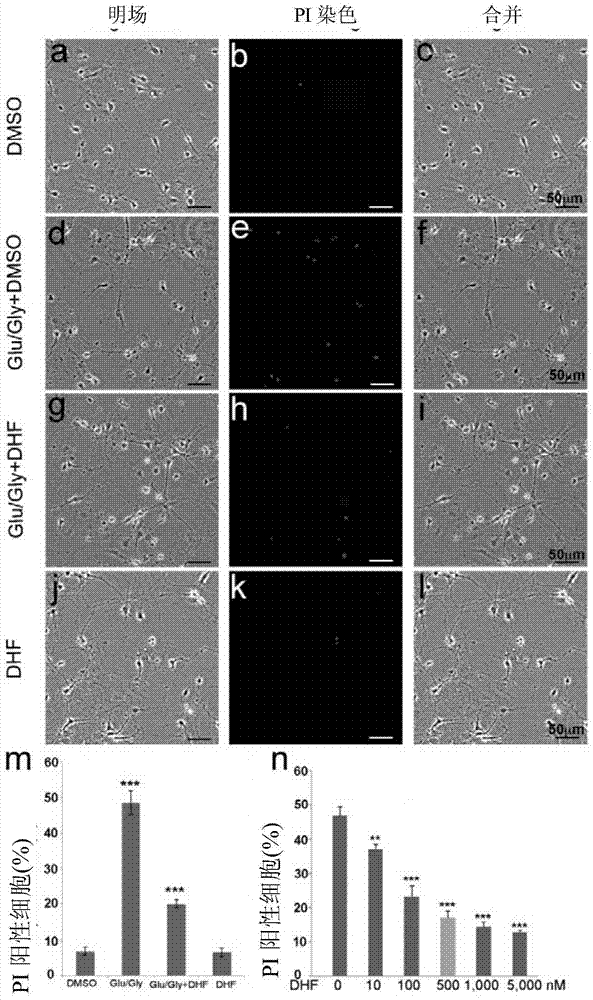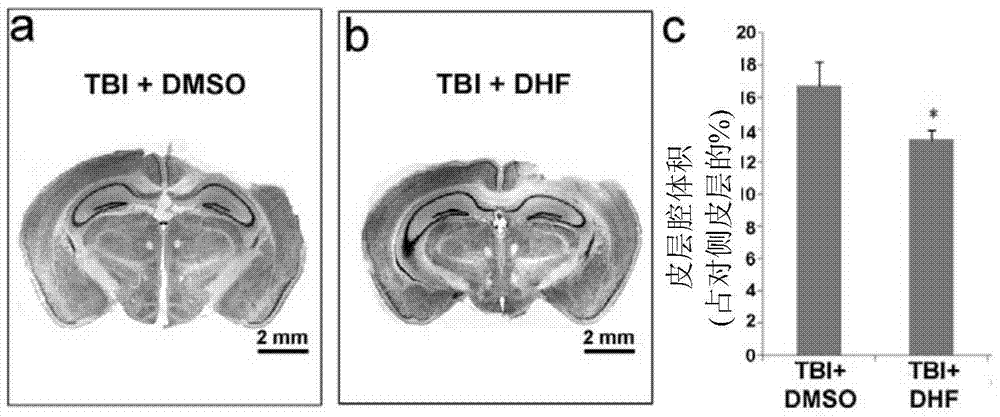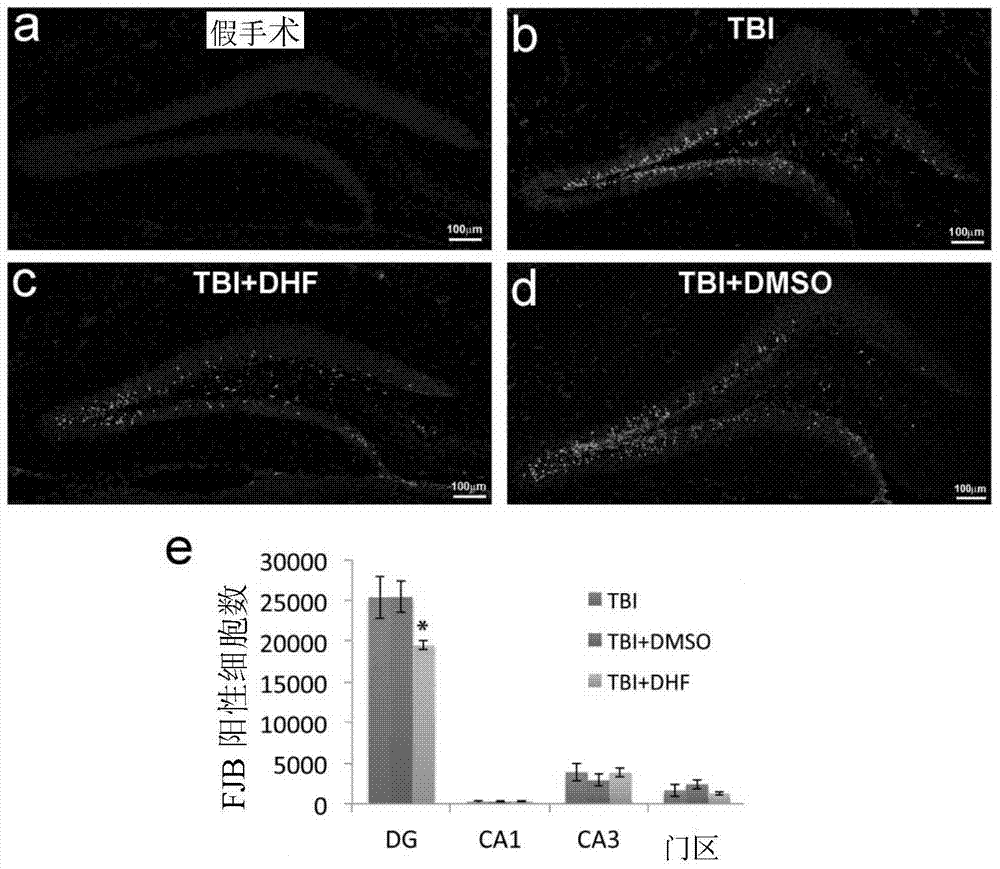Compositions and methods for treating and preventing neuronal damage from traumatic brain injury
A traumatic, brain-injured technology, applied in drug combinations, neurological diseases, pharmaceutical formulations, etc., can solve problems that have not yet been effectively treated
- Summary
- Abstract
- Description
- Claims
- Application Information
AI Technical Summary
Problems solved by technology
Method used
Image
Examples
Embodiment 1
[0049] Example 1: DHF can protect neurons from cell excitotoxicity in vitro.
[0050] This example is to examine the neuroprotective effect of DHF in excitotoxic injury of cells, and the optimal dose in cells in vitro.
[0051] Hippocampal cell culture and in vitro TBI modeling. Brains of C57BL / 6 mice (postnatal day (P0)) were dissected, meninges were removed, and hippocampus was isolated. Hippocampal tissue was digested with papain, and single cells were harvested, plated on coverslips pretreated with lysine, and treated with B27Neurobasal TM Cultured in serum-free medium (Brewer et al., 1993). In order to simulate trauma in vivo, cells isolated for 5 days (DIV5) were treated with 100 μM glutamate and 20 μM glycine, and a group of cells were treated with the same volume of DMSO as a control for 60 minutes and then left for 24 hours.
[0052] DHF treatment. Thirty minutes before glutamic acid and glycine treatment, the cells were treated with DHF (dissolved in DMSO, the fi...
Embodiment 2
[0059] Example 2: DHF reduces cortical deficits after TBI
[0060] DHF is a small molecule (molecular weight of 254.25 g / mol) that can cross the blood-brain barrier to reach brain regions, thereby affecting the damage of TBI (Andero et al., 2011). Here DHF was administered by intraperitoneal injection to test whether DHF administration can reduce the death of cortical neurons after TBI in an in vivo model.
[0061] method
[0062] animal. Male C57BL / 6 mice (The Jackson Laboratories, Bar Harbor, ME) were given a 12 / 12-hour light / dark cycle environment and had adequate access to food and water. Mice aged 8-10 weeks were selected for modeling. All procedures were performed in accordance with the protocols of the Animal Care and Use Committee of Indiana University.
[0063] TBI modeling. C57BL / 6 mice aged 8-10 weeks were used to model TBI. The mouse was fixed on a stereotaxic instrument, the scalp was cut, and the intersection point of the line connecting the anterior and po...
Embodiment 3
[0071] Example 3: DHF reduces the death of immature neurons after TBI and increases the newly born immature neurons in the hippocampus
PUM
 Login to View More
Login to View More Abstract
Description
Claims
Application Information
 Login to View More
Login to View More - R&D
- Intellectual Property
- Life Sciences
- Materials
- Tech Scout
- Unparalleled Data Quality
- Higher Quality Content
- 60% Fewer Hallucinations
Browse by: Latest US Patents, China's latest patents, Technical Efficacy Thesaurus, Application Domain, Technology Topic, Popular Technical Reports.
© 2025 PatSnap. All rights reserved.Legal|Privacy policy|Modern Slavery Act Transparency Statement|Sitemap|About US| Contact US: help@patsnap.com



